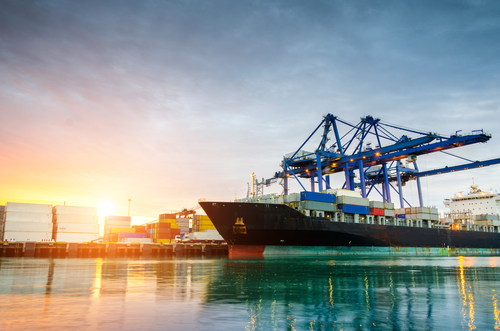Incidents at port terminals are an ever prevalent concern in the ocean logistics industry. From ships colliding, causing containers to fall into the sea, to fires and explosions, major incidents not only have a negative impact on the flow of cargo and result in major financial losses, but they can be extremely dangerous for the crew aboard.
Luckily, the growing trend of digitalization in ocean freight points to a positive outlook for safety in this sector. While digitization is often discussed in terms of its impact on efficiency, it has another profound benefit for the maritime sector – the ability to minimize incidents and improve overall safety for crew members.
One of the major causes of shipping incidents is equipment failure or other technological hazards. Digital technology can help shippers to keep equipment up-to-date before ships set sail. For instance, predictive maintenance, which is facilitated through AI, can alert the crew to when equipment is in need of maintenance and ensure that equipment is always in top shape, therefore minimizing the risk of failure after departure.
Geographical hazards, including icebergs, coral reefs and other difficult-to-navigate areas, also play a major part in freight incidents. These hazards can cause damage to ships, loss of cargo and endangerment to crew members. Being able to avoid risky areas is key to the smooth transportation of goods and people, and this requires smart navigation. Modern technology, such as GPS, can help shippers to find the best routes and avoid dangerous spots. Additionally, weather data can be transmitted in real time to allow careful planning of ship routes.
Digitalization in ports themselves is also a way to improve efficiency of ocean freight and reduce delays. Many ports experience congestion due to a lack of proper infrastructure, which can lead to incidents. With the right tools to transmit, collect and analyze data, ports can effectively manage traffic and reduce accidents. As such, both the flow of traffic and the safety of workers will improve.
The Maritime and Port Authority of Singapore (MPA Singapore) is a prime example of the significant impact that digitalization has on port safety; the port authority has reported that the number of major incidents has dropped from 0.8 incidents per 100,000 vessel movements in 2009 to a rate of less than 0.12 in 2018.
MPA Singapore credits digitalization for its major reduction in incidents over the last 10 years; according to Lam Pin Min, Senior Minister of State for Transport and Health, “The use of technology and digitalization can further enhance maritime safety by providing seafarers better access to critical safety-related information and early warning of potential incidents.”
Therefore, MPA Singapore is helping the International Association of Marine Aids to Navigation and Lighthouse Authorities (IALA) to implement e-navigation for vessels as part of the initiative to digitalize key maritime services and ultimately enhance the safety of marine navigation, improve efficiency and reduce transaction costs for the shipping industry.


